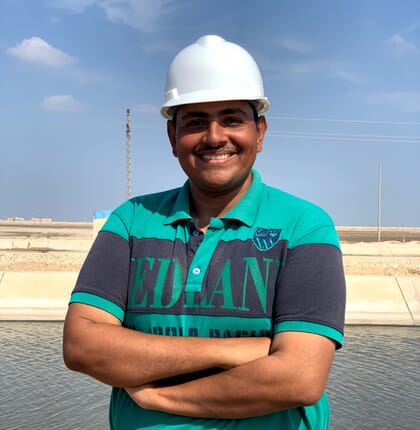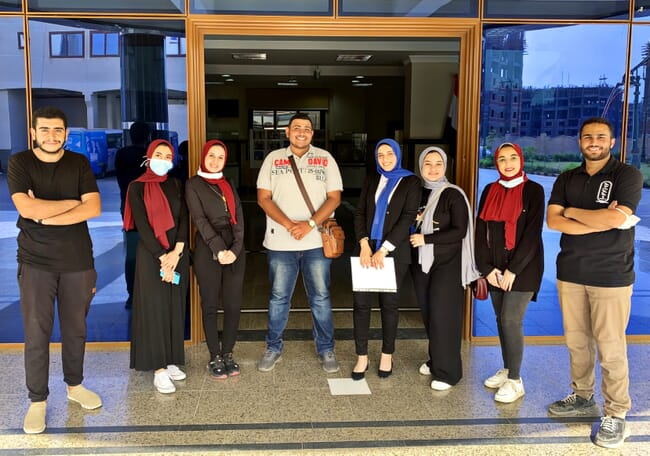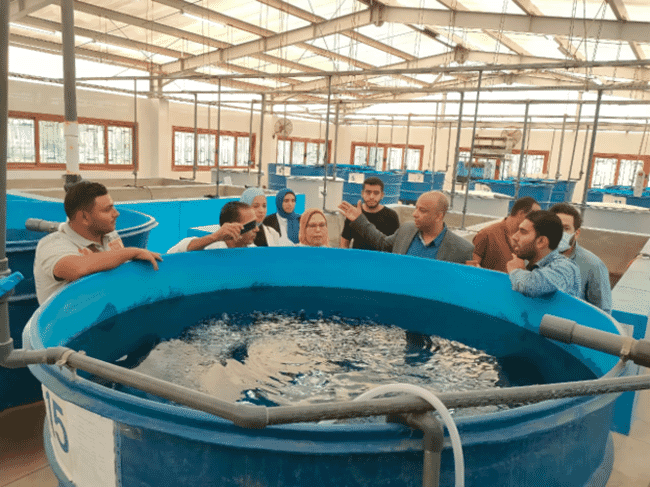
The Octopus initiative hopes to inspire young people to pursue community work and preserve Egypt's aquatic resources
Can you briefly describe your aquaculture career?
I work as an aquaculture engineer at the Al-Fayrouz project, east of Al Tafreah in Port Said Governorate, which is the largest of its kind in the Middle East. According to statistics on the official website of the Presidency of the Arab Republic of Egypt, the project will cover 26,000 thousand acres, with nearly 6,000 ponds and a production capacity of over 13,000 tonnes of fish and shrimp per year. It was established by the National Company for Fisheries and Aquaculture of the Armed Forces, in cooperation with the Suez Canal Authority. I am also the founder and CEO of the Octopus initiative.
What are the main aims of Octopus?
Its main aim is to create a culture in which citizens seek to preserve the aquatic environment and biological balance, and follow sustainable development goals in aquaculture, processing and packaging. It also aims to inspire youth to participate in community work.
What inspired you to create the initiative?
Arabic scientific research publications are less numerous compared to studies in other languages. We created Octopus to provide information in Arabic, while including foreign sources for those who want more knowledge.
Who sponsors the initiative?
Prof Dr Ashraf Sobhy, Minister of Youth and Sports of the Arab Republic of Egypt.

The initiative began to provide scientific content and awareness training in March 2021
What does the initiative offer?
The role of the initiative includes:
- Working on project ideas that contribute to increasing aquatic production and presenting them to the specialised state authorities to discuss ways of implementing them.
- Training students from various universities, with the support and coordination of the Ministry of Youth and Sports.
- Interactive training in the form of a live broadcast on our official page as well as the page of the Ministry of Youth and Sports.
- Providing consultations and feasibility studies to investors and providing the necessary technical support so that the competent scientific, legal and supervisory authorities can help facilitate the implementation of their projects, including encouraging investment. Egypt is the world’s sixth largest aquaculture producer, harvesting over two million tonnes last year.
- Working on project ideas that limit the effects of climate change on aquatic life and presenting them to the specialised state agencies to discuss ways of implementing them.
What has Octopus achieved to date?
The initiative has published or translated nearly 300 scientific papers in the fields of environmental protection and aquatic disease reduction. These publications have reached more than 500,000 people since the initiative was launched. Meanwhile joint training within Egyptian universities has been given to 4,000 trainees, helping prepare graduates for the labour market.

The initiative has published or translated nearly 300 scientific papers in the fields of environmental protection and aquatic disease reduction
What’s your ultimate ambition in the sector?
The future is made by science, work and ambition, and we aim to cooperate with ministries inside and outside Egypt to increase financial support for events and help young people form a scientific network to increase the global supply of protein.
How is Egypt's aquaculture sector developing?
Egypt’s aquaculture sector has grown during the rule of President Abdel Fattah El-Sisi, thereby reducing the gap between production and consumption, limiting imports and increasing export opportunities to Arab and European markets. It has provided thousands of new job opportunities and greater volumes of high-quality fish.
Fish farming projects account for about 75 percent of the total fish production in Egypt, with the volume of production due to rise after the completion of several major new fish farming projects, including in the Suez Canal, Port Said and Ghalioun. The last of these, which was inaugurated by the President of the Republic, will include a hatchery, while it will also be able to grow out 2,000 tonnes of marine fish a year as well as a factory for freezing and packaging fish and shrimp conforming to international export standards.

Officials have created plans that would increase fish production in Egypt to 3 million tonnes by 2025
There are also plans to build a database for methods that increase the production of fish and shrimp, and the establishment of laboratories equipped with the latest scientific methods for early detection of diseases and working to treat them, in addition to the establishment of training centres and infrastructure.
How do you think Egypt’s aquaculture industry will develop?
There is a promising plan to raise fish production in Egypt to 3 million tonnes by 2025. Key components include:
- Developing inland fisheries, especially on Lakes Manzala, Burullus, Mariout and Bardawil.
- The expansion of fish farming through major national projects, such as Ghalion, El-Fayrouz and the Suez Canal.
- Developing marine fish hatcheries and expanding shrimp farming in marine fish hatcheries such as at Ghalion, and the expansion of shrimp farming, as in El-Fayrouz.
- The expansion of aquaponic systems that can, for example, produce both tilapia and leafy greens.
- Increasing fish production by converting the traditional extensive and semi-intensive farms to intensive production and maximising yields by using different techniques such as recirculating water in existing earthen ponds, as well as removing organic waste.




